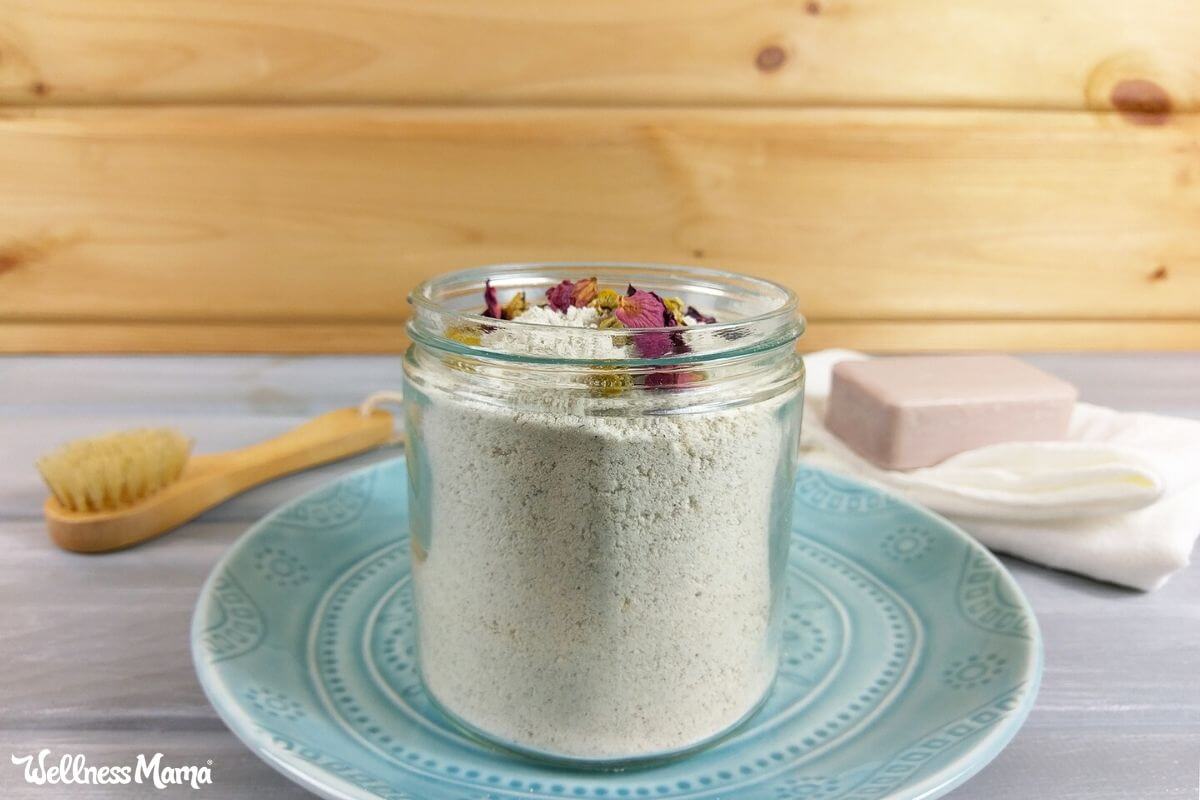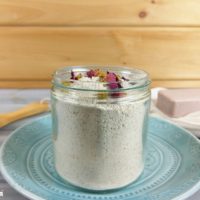You won’t find a bowl of oatmeal at my breakfast table, but I do keep oats on hand for DIY skincare projects like these cleansing grains. An oatmeal bath is another skin-loving way to use oats. People have used oatmeal baths for centuries to soothe damaged skin. Research in recent decades reveals even more evidence behind the practice.
What Is Colloidal Oatmeal?
Like colloidal silver, colloidal oatmeal is just oats that are transformed into very very tiny particles (like 1/100th of a millimeter tiny!). Manufacturers make colloidal oatmeal with special grinders or proprietary processes that involve cooking and drying whole oats.
How to Make Colloidal Oatmeal at Home (Spoiler Alert: You Can’t!)
Colloidal oatmeal is made when the whole oat, including the bran, is ground into microscopic particles. Coffee grinders and kitchen food processors aren’t going to cut it.
Oat flour is much finer than home-ground whole oats, but the skin-loving bran is removed rendering it nearly useless for an oatmeal bath.
So why are we making a homemade oatmeal bath recipe if we can’t make colloidal oatmeal? Ground, whole oats are still beneficial to skin even when not as fine as colloidal oats. They make for lumpy lotion, but they’re still great in a bath!
Why Oatmeal Is Recommended for Skin Conditions
Allow me to get geeky for a minute here. The results speak for themselves when it comes to the benefits of a soothing bath with oatmeal. Yet, there’s actually a lot of science behind the practice.
Moisture-Balancing Barrier
Colloidal oatmeal is especially good for dry, damaged skin. The oats provide an emollient, moisturizing barrier that locks in moisture.
A 2017 study looked at eczema sufferers and found that colloidal oatmeal users saw more than 82% improvement in their eczema and nearly 86% had less itchiness. Another study around the same time found oats can help strengthen skin’s barrier by regulating fats in skin and balancing skin pH, which improved eczema-related skin damage.
Inflammation Reducing
One reason why oatmeal baths are a great home remedy for eczema is their ability to ease inflammation. A 2015 study found colloidal oatmeal is anti-inflammatory and reduces inflammation-causing cytokines.
Antioxidant Power
Several studies show colloidal oatmeal acts as a powerful antioxidant for skin. How does that work? Oats contain phenols that help absorb UV rays and reduce damaging inflammation.
Which Skin Conditions Are Oatmeal Baths Good For?
It’s hard to go wrong with an oatmeal bath. These skin conditions can usually benefit from an oatmeal bath soak:
- Sensitive skin or dry skin
- Allergy prone skin (i.e. hives)
- Eczema and psoriasis
- Sunburn
- Damaged skin (from pollution, chemicals, or UV damage)
- Anal itching
- Baby acne
- Chickenpox and shingles
- Diaper rash
- Bug bites
- Rashes from poisonous plants (like poison ivy)
Who Shouldn’t Use an Oatmeal Bath
A 2012 meta-analysis looking at the safety and efficacy of personal care products containing colloidal oatmeal found that out of over 445,000 people who use colloidal oatmeal, there were few adverse events. There are some things to watch out for though.
- The water should be warm, but not hot.
- It’s also important to not soak for too long… 15-20 minutes is ideal. A bath that’s too hot or too long can dry skin out, the opposite of what we’re going for here.
- People with Celiac disease could have a reaction to gluten contamination in the oats. You can buy certified gluten-free oats (linked below) here to be on the safe side.
- Use only steel cut or rolled oats. Instant or quick oats are highly processed (and usually high in glyphosate!) and don’t contain the same nutrients needed for skin health.
DIY Colloidal Oatmeal Bath Recipe
Materials
- 1 cup rolled oats (or steel cut)
- ¼ cup chamomile flowers (or lavender, rose, or 4 chamomile tea bags)
- ½ cup baking soda (optional)
- 5 drops essential oil (soothing ones such as lavender, optional)
Instructions
- Run the oats and herbs through a coffee grinder or food processor in batches until they’re a very fine powder.
- If using the essential oils, add this to some of the ground oats and grind to combine.
- Combine the oats, baking soda, and herbs together in a glass jar.
- To use, dump the jar’s contents into warm water. If the oats aren’t super fine, then put them into a panty hose leg and steeped in the bath water before taking your soak. This prevents the bottom of the tub from getting yucky.
- Soak for about 15-20 minutes in a warm bath, not piping hot water. Hot water and/or a long soak can cause the skin to dry out further and cause more skin irritation.
- Pat the skin dry once you get out.
Notes
This article was medically reviewed by Madiha Saeed, MD, a board certified family physician. As always, this is not personal medical advice and we recommend that you talk with your doctor.
Have you ever tried a DIY oatmeal bath? Did it work for you?



Leave a Reply